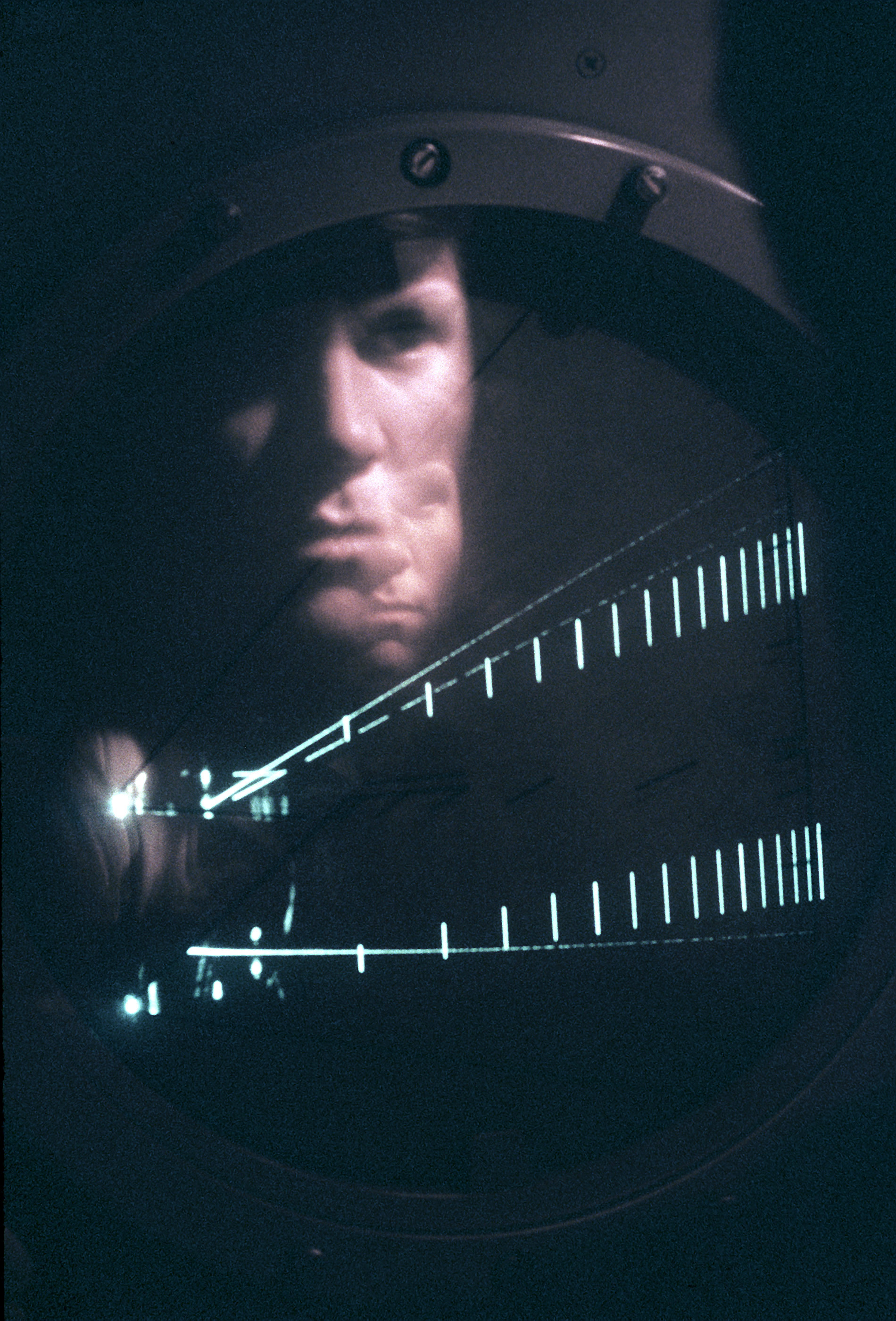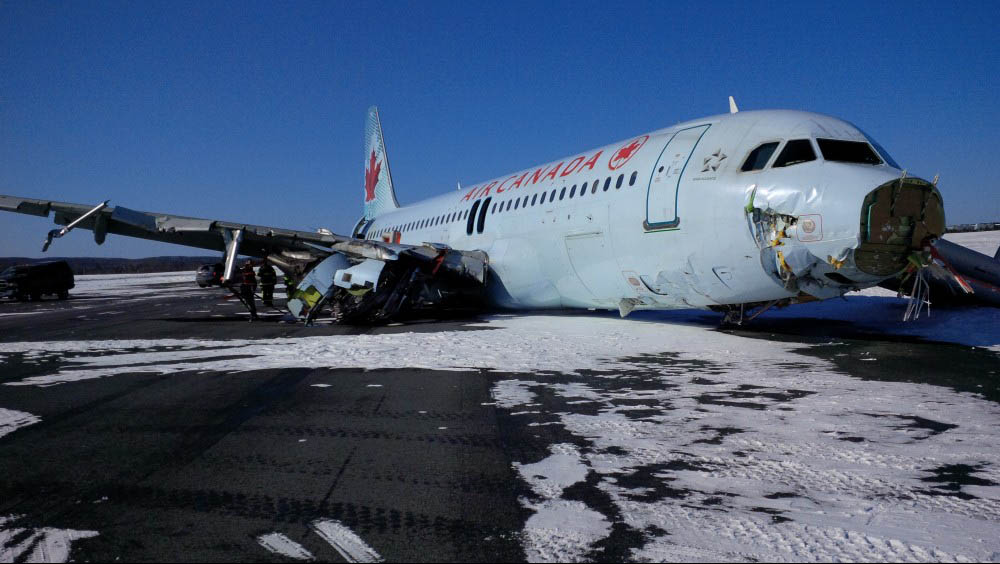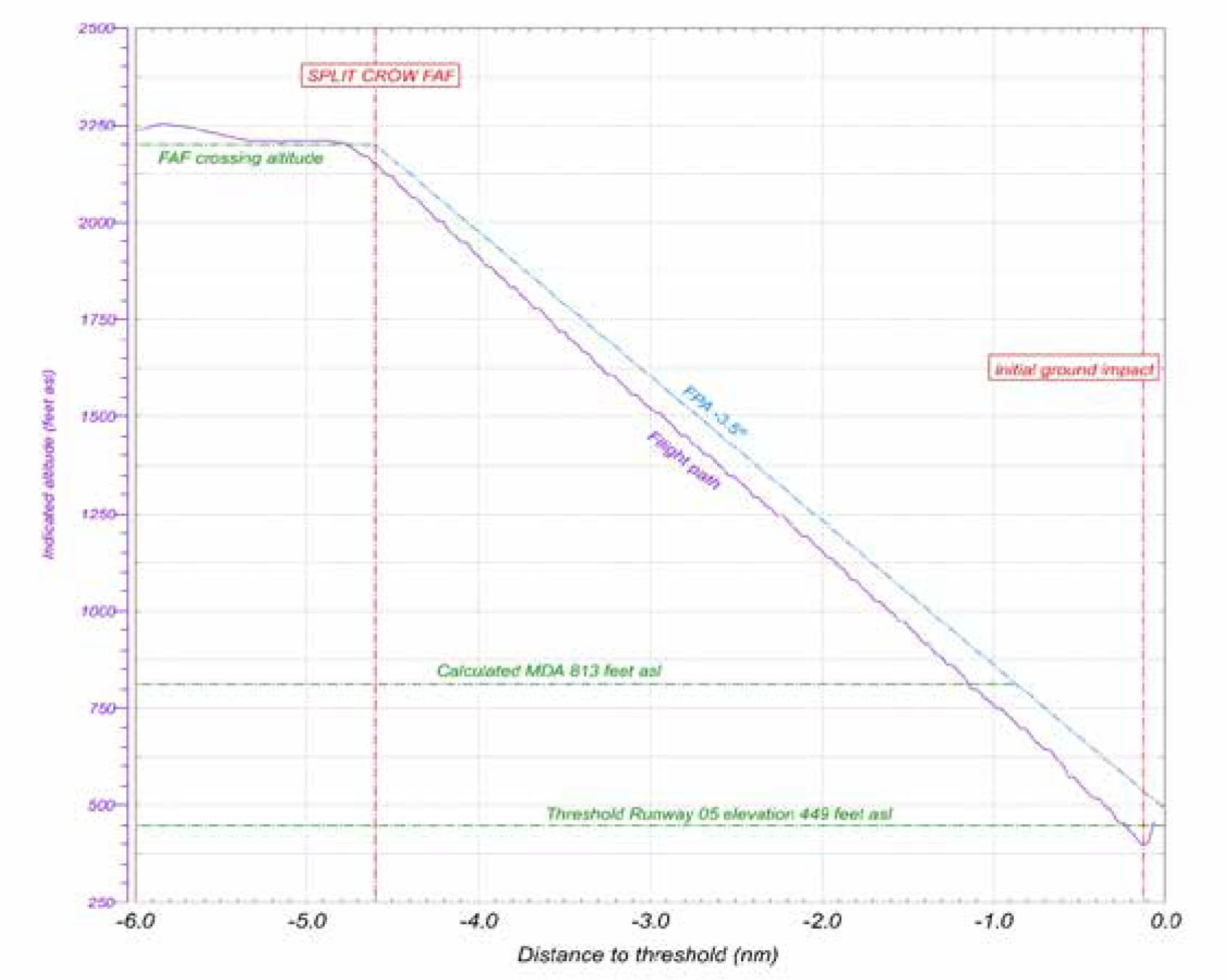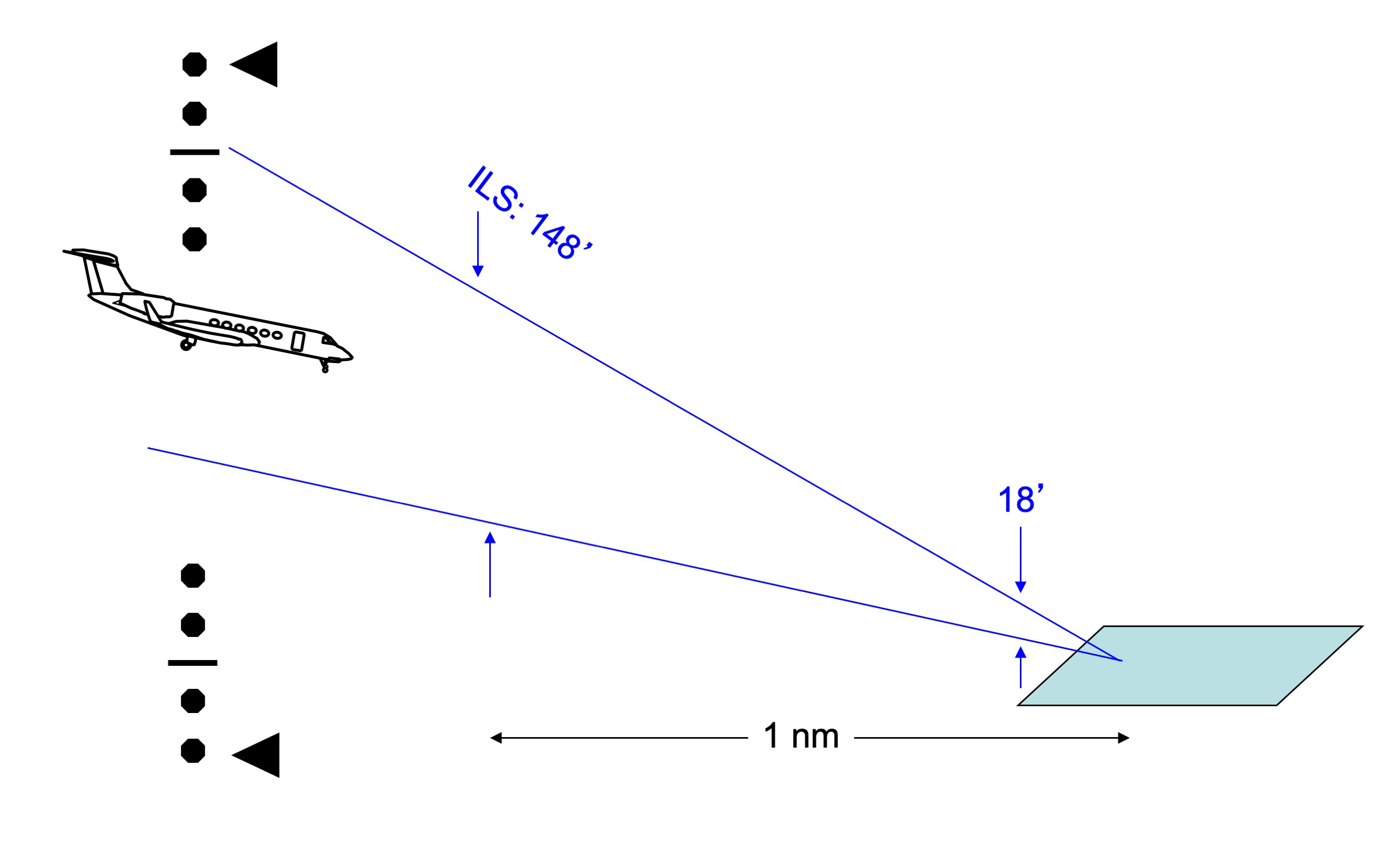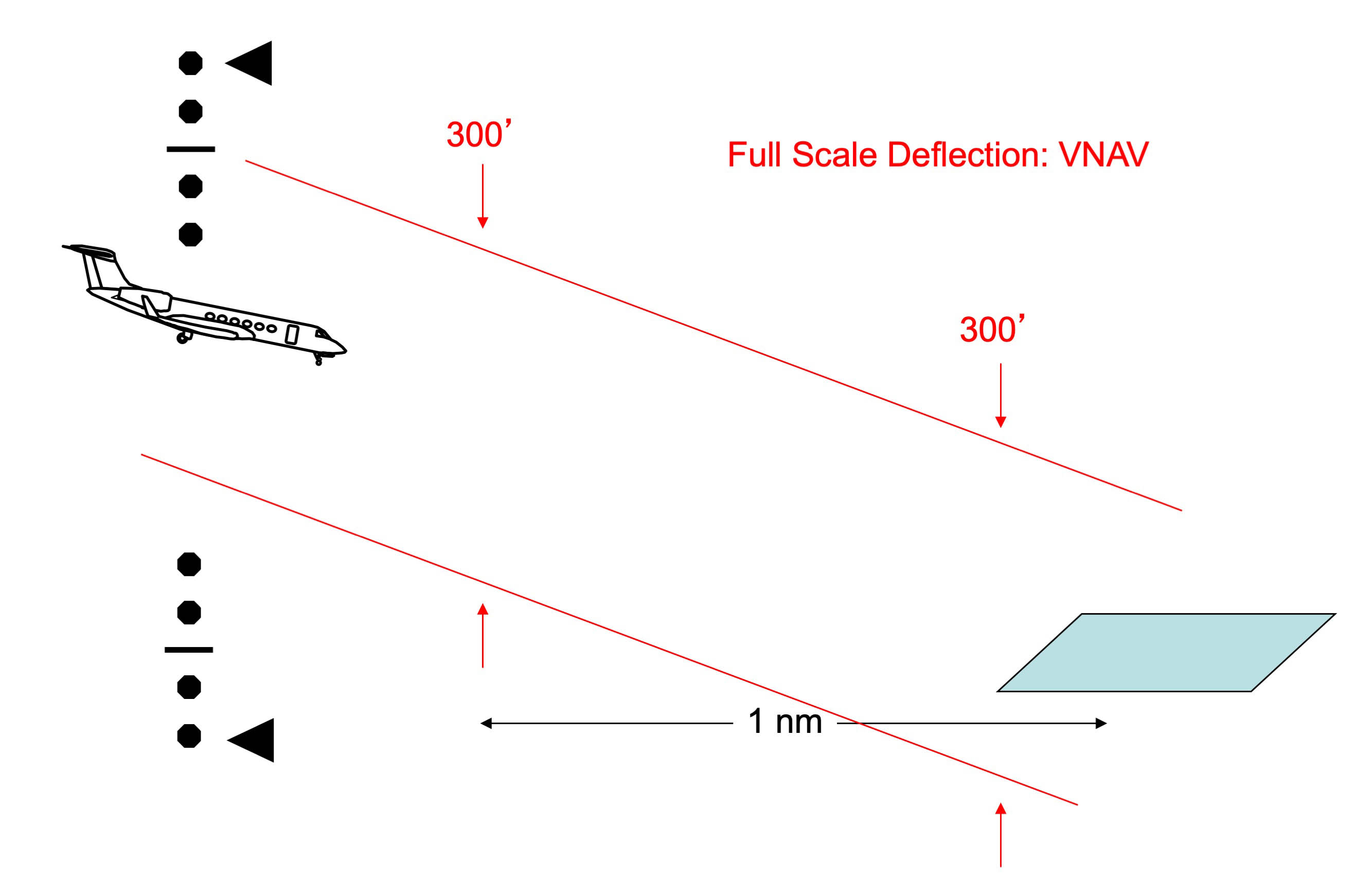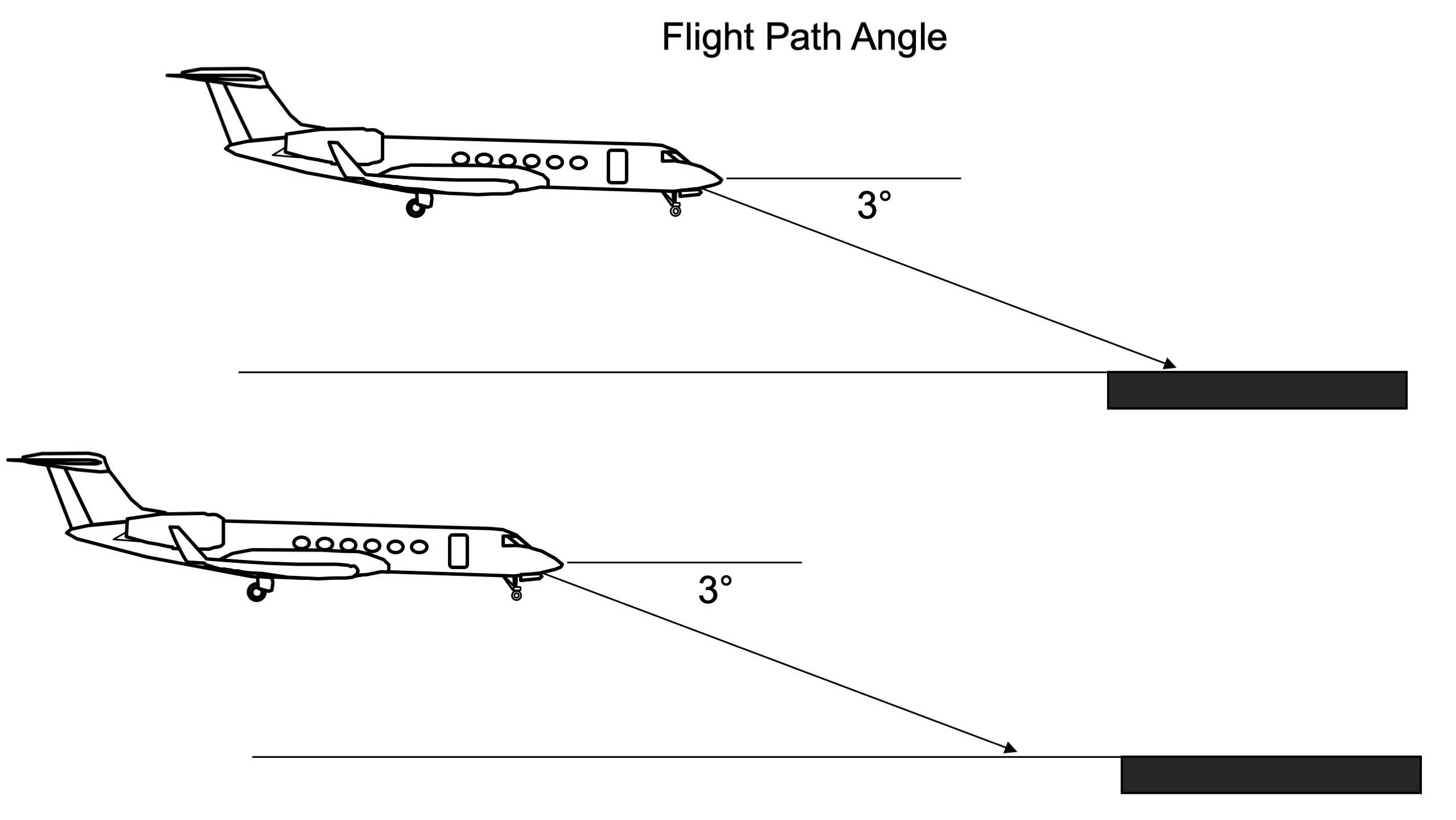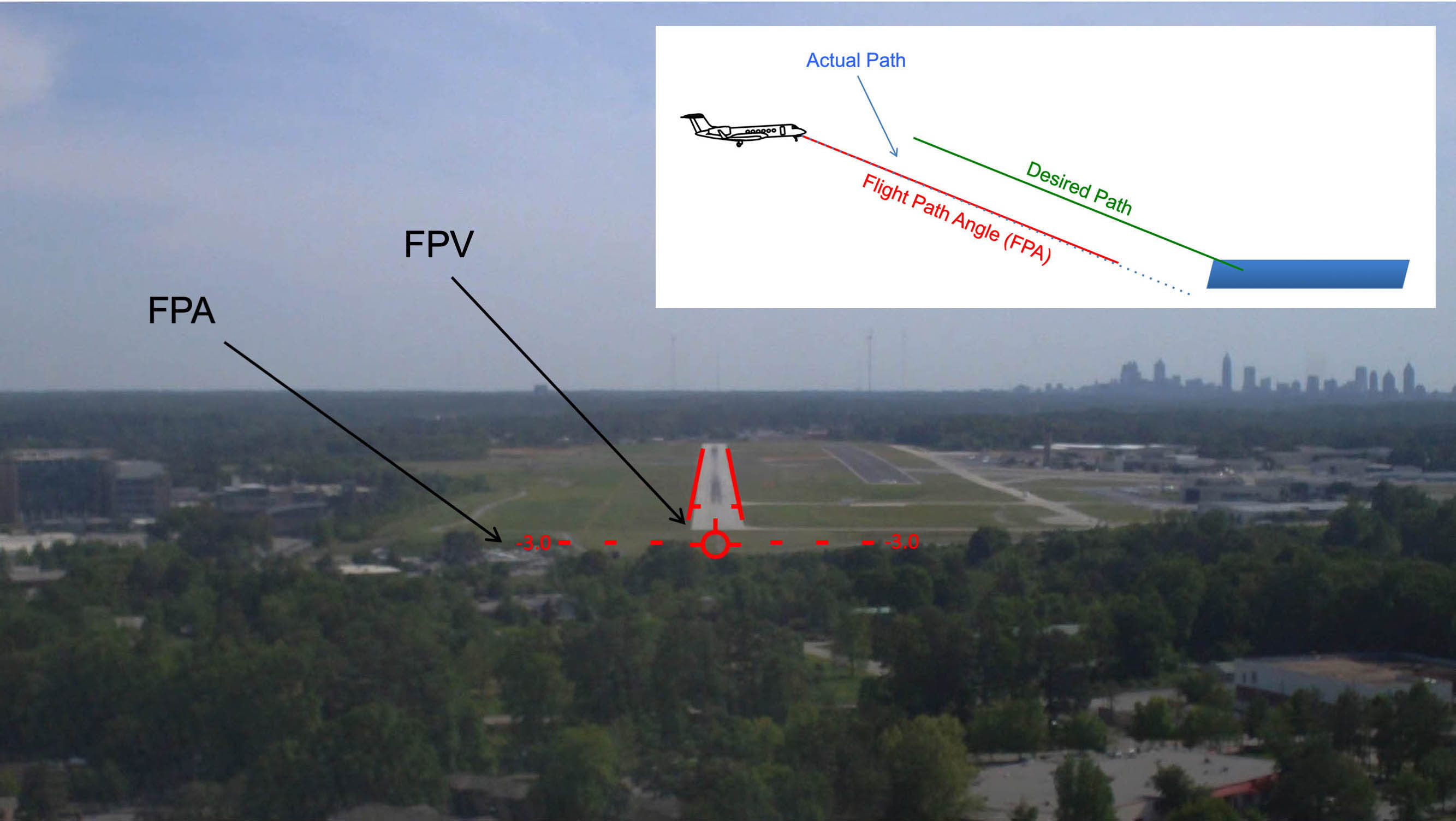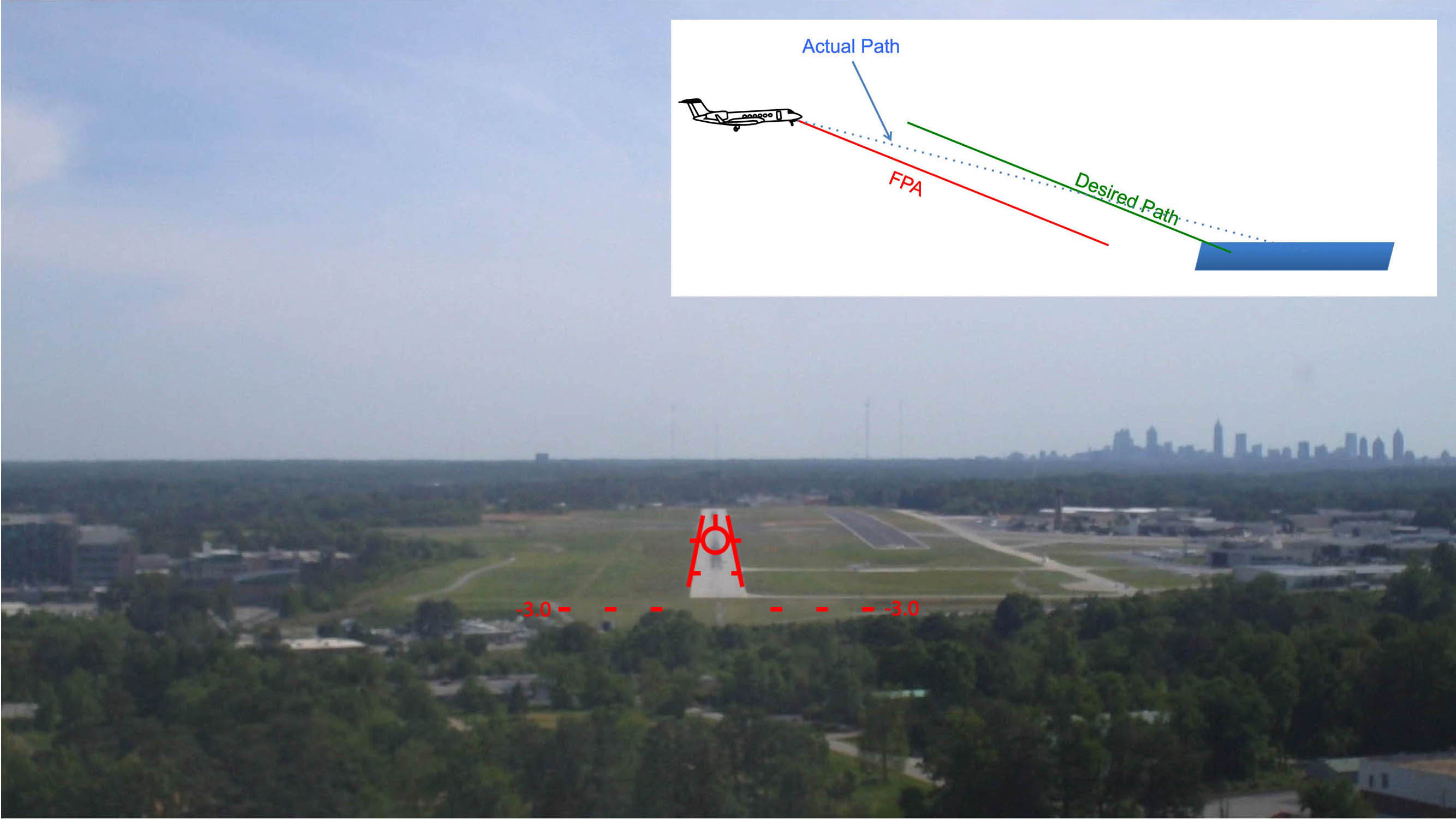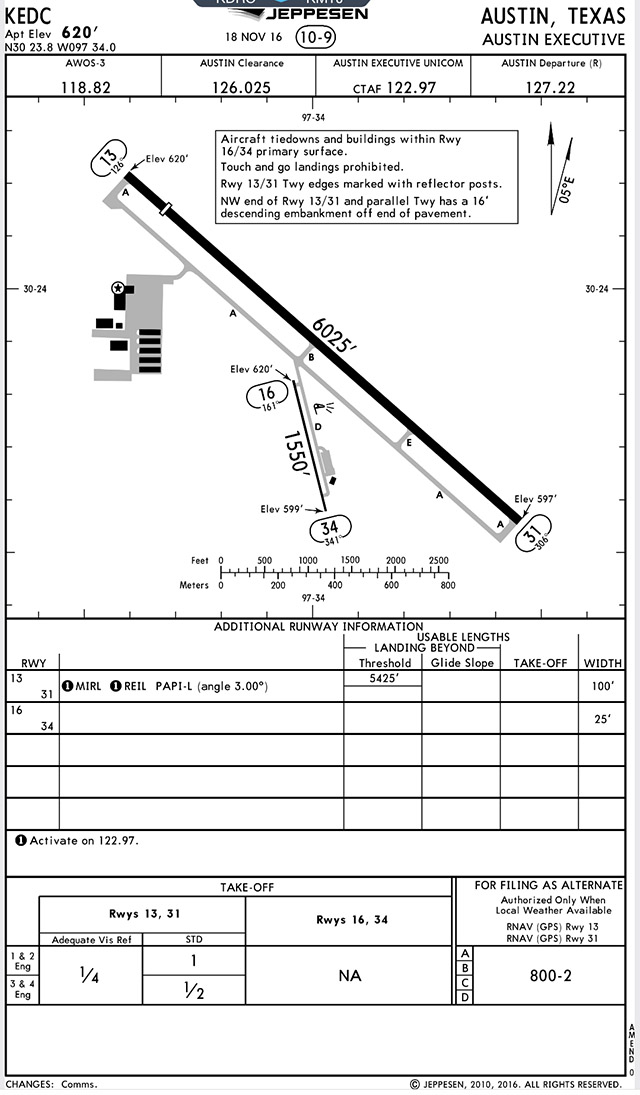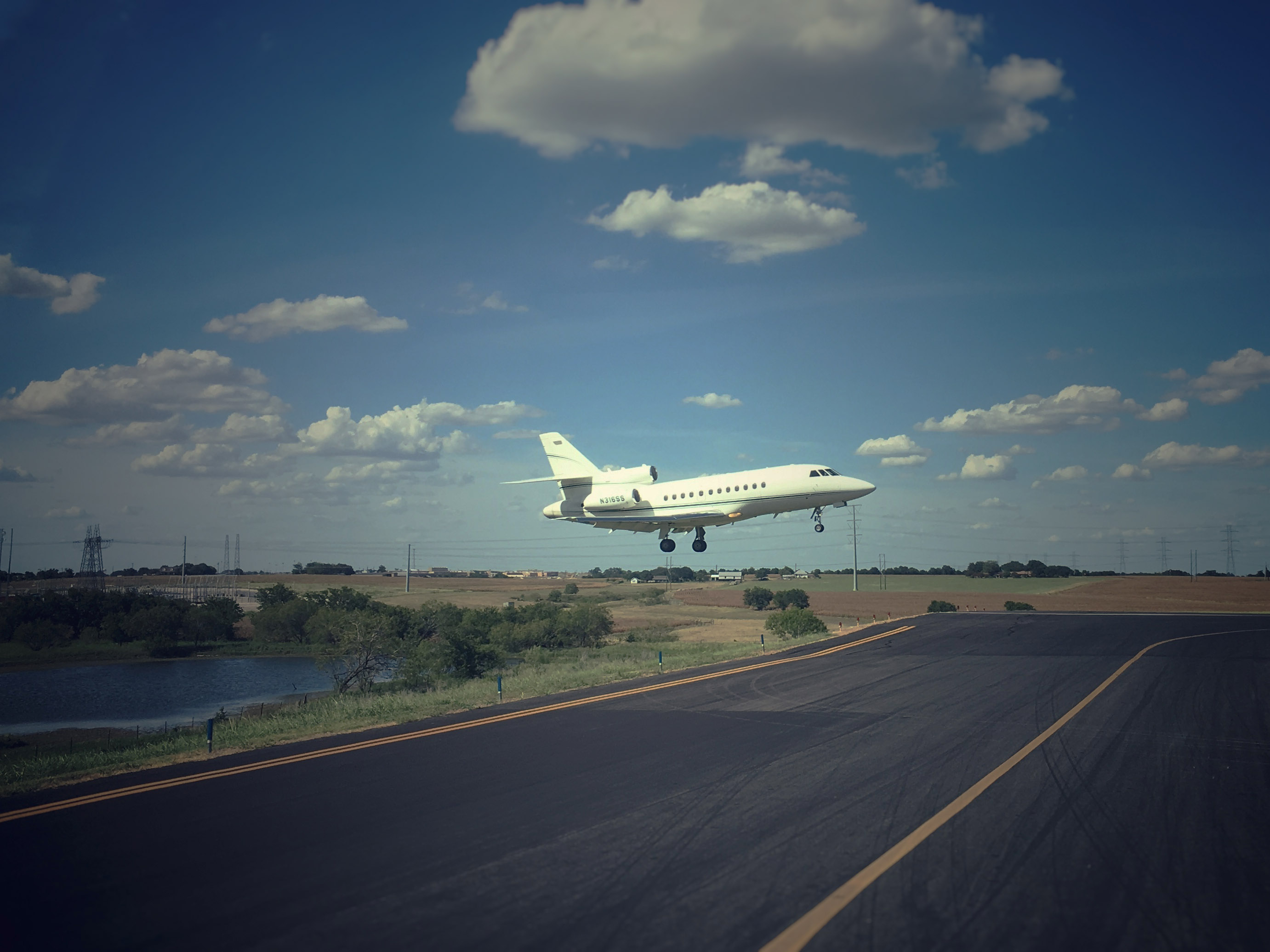When I started flying big airplanes, it seemed the accepted technique for getting stopped on a short runway was to fly about a dot low on an ILS or "slightly below glide path" on a Precision Approach Radar (PAR) approach, hoping to spot the runway early and then aim for the first inch of pavement once visual.
— James Albright

Updated:
2019-02-01
This was called the "duck under" and was officially frowned upon by all parts of the Air Force except at some squadrons where it was the accepted way to land on short runways. Two of my squadrons subscribed to the duck under, including one at the 89th Airlift Wing at Andrews Air Force Base near Washington, D.C. I always thought the duck under was a recipe for disaster and that as practitioners we were sitting ducks for a gust of wind or a visual illusion. In 1981 a sister squadron crashed an airplane and I thought we, the Air Force, would learn our lesson. We did not. It seems some civilians are also sitting ducks for the duck under.
1 — The last flight of RC-135 61-2664
2 — The last flight of Global Express C-GXPR

1
The last flight of RC-135 61-2664
An RC-135S was a highly modified Boeing 707 outfitted with all sorts of "spy gear" intent upon tracking and photographing Soviet test missile shots that were aimed just south-west of the Aleutian Islands. So, for that reason, the airplane and its crews spent a lot of time at Shemya Air Force Base in the Aleutian Islands. While some might confuse the airplane for the KC-135A tanker, it was quite a bit heavier. You might also think the island's 10,000 foot long runway was plenty long, but that was about as short a runway as you would need for the RC-135S at its operational weights. You had to land with enough fuel reserve to get to Anchorage or Fairbanks. The weather was almost always foggy, rainy, or snowy. You could count on a 25-knot crosswind. The temptation to duck under was great. I've flown a similar airplane to Shemya several times, more about that: You Can't Go Unless You've Been.
To understand what happened to this airplane, you need only follow the recorded radio transmissions between the PAR Radar Final Controller (RFC) and the aircraft (66). A Precision Approach Radar (PAR) approach was a popular choice in the Air Force for locations without ground-based navigation aids, such as Shemya at the time. The PAR controller uses radar to track the aircraft's lateral and vertical position against a known lateral and vertical path to give pilots heading and descent information. More about this: PAR.
Ideally, pilots will hear "on course, on glide slope" all the way down final until they hear "you are over the landing threshold, take over visually." That's not what happened for 61-2664's last flight. Six of the 24 crewmembers on board were killed.
- RFC: PAR Final Controller
- 66: Exult 66 (Mishap Aircraft)
- TWR: Tower
- RFC: Exult six six, Shemya final controller how do you hear me?
- 66: I read you loud and clear.
- RFC: Exult six six you're loud and clear, also fly heading of one one zero.
- 66: Roger one one zero.
- RFC: On course and on final do not acknowledge further transmissions, eight miles from touchdown; turn left heading one zero five.
- RFC: Heading one zero five; drifting left of course; now turn right heading one zero seven.
- RFC: Turn right heading one one zero; seven miles from touchdown.
- RFC: Wind one two zero at two zero; approaching glide path; wheels should be down.
- 66: Roger sir, we're gears down.
- RFC: Roger.
- RFC: Turn right heading one one two; begin descent; six miles from touchdown.
- RFC: Wind one three zero at three zero; cleared to land.
- RFC: Slightly below glide path; turn right heading one one five.
- RFC: Left of course heading one one five.
- RFC: Going well below glide path
- RFC: Turn left heading one one three.
- RFC: Five miles from touchdown.
- RFC: Turn left heading one one zero.
- RFC: Holding well below glide path; on course, heading one one zero.
- RFC: Turn right heading one one two.
- RFC: Holding slightly below glide path; slightly left of course; turn right heading one one five; four miles from touchdown.
- RFC: Slightly below glide path; heading one one five, slightly left of course.
- RFC: Wind one two zero at three zero.
- RFC: Heading one one five; on glide path
- RFC: Turn left heading one one two.
- RFC: Turn left heading one one zero; now slightly right of course; three miles from touchdown; on glide path
- RFC: Turn left heading one zero eight.
- RFC: On glide path; heading one zero eight, right of course.
- RFC: Turn left heading one zero six.
- RFC: Going slightly above glide path; heading one zero six.
- RFC: Turn left heading one zero four; two miles from touchdown; slightly above glide path
- RFC: Heading one zero four, turn right heading one zero six.
- RFC: On course, heading one zero six; drifting left of course, turn right heading one zero eight.
- RFC: Turn right heading one one zero.
- RFC: On glide path . . . left of course heading one one zero.
- RFC: Going slightly below glide path; one mile from touchdown.
- RFC: At decision height.
- 66: Sir, we've got the lights.
- RFC: Roger.
- RFC: Slightly below glide path, slightly left of course.
- RFC: Well below glide path.
- RFC: On course; over landing threshold.
- RFC: Tower.
- TWR: He crashed close to the end of runway one five, I mean one zero.
Source: USAF Mishap Report, Tape Transcript, Shemya GCA Final
The Air Force placed the blame squarely on the pilot, saying he "did not understand the effect of headwind on glide path vertical velocity." And that, "at decision height the pilot's attention became channelized on the approach lights and crosswind control, allowing the excessive rate of descent to continue unchecked."
I think the Air Force missed the cause completely. At the time, many Air Force flying units were shooting for a touchdown in the first 500 feet of the runway and one way to do that was to aim for the first brick of pavement and flare to 500 feet. We all preach that this is dangerous and that our performance numbers are based on aiming for 1,000 feet. But when the runway is short and/or contaminated, it is awfully tempting to duck under.
I've flown with a few RC-135 pilots over the years and they acknowledge that the practice was once condoned but later frowned upon. That is pretty much my experience at a few squadrons where the organization discovers there is a problem, acts properly to stamp it out, but then a few practitioners try to resurrect it. The idea of the duck under seems to be too much for some to resist.
And here is the dirty little secret nobody will admit: it works. With a little practice and some proficiency, you CAN aim for the first inch of pavement and touch down at 500 feet or even sooner. The proof can be found by looking for tire skid marks from big airplanes at 500 feet and earlier. (There used to be a distinctive pattern of 18 wheels in the overrun at Andrews AFB. Only one airplane in the world has that pattern.) But there is a problem, of course. With a little shift in wind, or with a little visibility obscuration, the airplane can end up short. Had this RC-135S made the same approach at its home airport, one with a 1,000 foot overrun, the landing would have been a hard bounce and some good natured ribbing from the crew. But Shemya doesn't have an overrun. Had the Air Force taken the need to remain on glide path more seriously that radar controller would have issued the by-the-book radio call: "Too low for safe approach, go around." It is up to us pilots to issue that call if we find ourselves in the same situation.
For more about this accident, see: Case Study: RC-135S 61-2664.
2
The last flight of Global Express C-GXPR
There is more to this crash than the simple duck under but the brand new airplane was lost because the pilots were well practiced at flying a duck under to this short runway. They were well practiced at doing so in a shorter airplane with different landing geometry that allowed them to get away with it. They were sitting ducks for a gust of wind, poor visibility, and in this case, a newer airplane.
Here is a quick quiz for you. If you are flying a Global Express BD-700 where the main landing gear is 41 feet behind you in the cockpit, how far behind your aim point will they contact the runway if you don't flare? In other words, what is the earliest aim point you can have and be guaranteed the wheels will not hit before the runway? The answer is 285 feet. The pilots of C-GXPR got this wrong.
- Approaching the destination, the crew completed the approach and landing briefing. Because a damp runway and a crosswind were expected, they planned a firm touchdown followed by use of reverse thrust. The autobrake system has settings of low, medium or high. For passenger comfort, the autobrake system was selected on the low setting. In order to maximize the available roll-out distance, the touchdown point was planned for the first 500 feet of runway, the same distance this crew had used in the past when flying into CFH4 with other company aircraft. The captain had verified the landing distance performance and had estimated that, for the conditions, 4300 feet of the 4885-foot runway was required.
- At 1434:20 (T-5) and only 830 feet from the threshold, the aircraft radio altitude auto call-out system announced "50"; this is what the captain normally used as a prompt to begin the flare. The PF started raising the nose of the aircraft and was now using considerable aileron and rudder input. At this time, both engines were at 50 percent N1 rpm and the wind was calculated as a 21-knot headwind component and an 8-knot crosswind component.
- At 1434:21 (T-4) and only 680 feet from the threshold, the autothrottle mode changed from the SPEED to the RETARD mode. This caused the thrust levers to automatically retard to the IDLE position. At this point on the approach, there was no recognition by the crew that the aircraft was on an unsafe flight path.
- At 1434:23 (T-2) and 360 feet from the threshold, the crew felt the aircraft sinking, and the airspeed decreased to 102 knots. The aircraft radio altitude auto call-out system announced "30". The PF increased the rate of pitch change, eventually reaching a nose-up attitude of 10.6°. At this time, the engines were at 38 per cent N1 rpm and still reducing, but no additional thrust was applied.
- At 1434:25, the aircraft touched down 7 feet 6 inches short of Runway 33 and 18 inches below the surface of the runway
- As the right main landing gear struck the edge of the runway surface, it collapsed. The initial impact triggered the emergency locator transmitter (ELT) as well as the cockpit voice recorder (CVR) acceleration switch, which ended the recording of crew exchanges.
- The aircraft continued down the runway with the right wing dragging. At 640 feet from the touchdown point, the aircraft departed the right side of the runway. It traveled across several earthen mounds and pivoted 120° to the right before coming to a stop.
Source: Aviation Investigation Report A07A0134, §1.1
There are few contradictory ideas here. They computed a landing distance of 4300 feet, which would have included a 50 foot threshold crossing height, yet they planned on crossing the threshold below that height. They planned a firm touchdown, but selected the lowest setting of the autobrakes. But there is another factor at work. If you know you only have 4885 - 4300 = 585 feet to spare, there will be a lot of pressure to land earlier than a 50-foot crossing height would allow. They briefed a touchdown at 500 feet. They briefed a firm touchdown. But they were flying the owner of the aircraft who didn't pay all that money for a firm touchdown. They were sitting ducks for what happened next.
The geometry of approach at the 50 foot call would indicate a 3.45° glide path — arctan (50 / 830) — if aiming for the first inch of pavement, but 2.33° — arctan (50 / 1230) — if aiming for the 500' point, as the pilot had intended. Either way, the approach could have worked under these circumstances, but there was no margin for error.
For more about this accident, see: Case Study: BD-700 C-GXPR.
3
The last flight of Air Canada 624
Sometimes, even when you are well practiced at doing everything by the book, you are a sitting duck for allowing a minor mistake turn into a major accident. Sometimes, even when you are well practiced at landing at minimums, the visual cues for making the land or go around decision are so slight that you are a sitting duck for making the wrong decision. Both factors were in play here.
Based on the weather forecast and the notices to airmen (NOTAMs), the flight crew determined that they would conduct the localizer (LOC) approach to Runway 05 in Halifax.
While in cruise, the flight crew calculated the cold temperature corrections for the Split Crow final approach fix (FAF) crossing altitude, the minimum descent altitude (MDA), and the missed approach altitude. It was determined that the FAF crossing altitude would be 2200 feet above sea level (ASL), based on the published altitude of 2000 feet plus a cold temperature correction of 200 feet. The MDA was calculated at 813 feet ASL, based on the published MDA of 740 feet ASL plus a cold temperature correction of 23 feet, plus 50 feet added to the corrected MDA, as required by Air Canada’s Flight Operations Manual (FOM). The flight crew calculated a flight path angle (FPA) based on the temperature-corrected FAF. The calculation was based on the published vertical descent angle of −3.08° obtained from the Jeppesen approach chart and Air Canada’s Airbus A320 Quick Reference Handbook for a final calculated FPA of −3.5°.
Source: Aviation Investigation Report, A15H0002, ¶1.1
For an explanation on why, see: Altimeter Temperature Correction.
At 0027, the PM began the countdown for the distance to the FAF, indicating 0.5, 0.4, then 0.3 nm. At 0.3 nm from the FAF, the PF rotated the V/S-FPA knob to select −3.5°. The tower controller cleared AC624 to land; the runway lights remained at setting 4. The aircraft landing lights remained OFF, and the PM indicated that ground lighting was noted.
The aircraft started to descend about 0.2 nm from the FAF. The aircraft crossed the FAF at 2170 feet indicated altitude.
Source: Aviation Investigation Report, A15H0002, ¶1.1
The PF selected the descent 0.2 nm early, which comes to (0.2)(6076) = 1,215 feet. They crossed the FAF only 30 feet lower than their planned temperature corrected altitude of 2,200 feet.
As the aircraft descended, the actual flight path diverged from the desired profile as a result of wind variations. The divergence continued to increase throughout the approach. The airspeed was constant, and the vertical descent speed ranged between 700 and 800 feet per minute (fpm).
Source: Aviation Investigation Report, A15H0002, ¶1.1
At 0029:27, a radio altimeter automated audio call (automated call) of “400” was made, indicating that the aircraft was 400 feet above the terrain. Almost immediately after this call, the aircraft crossed the calculated MDA at 1.2 nm from the threshold. The PM observed some approach lights and called, “Minimum, lights only,” when the aircraft was about 1.0 nm from the threshold. The PF immediately called, “Landing,” and began to observe some approach lights. By this time, the aircraft had crossed the published MDA (740 feet ASL) and was 0.3 nm farther back than the published distance. The autopilot remained engaged as the aircraft continued descending, and there was no reduction in the descent rate.
Source: Aviation Investigation Report, A15H0002, ¶1.1
While they began their descent (0.2)(6076) = 1,215 feet early, the steeper FPA and various changes in wind meant they ended up (0.3)(6076) = 1,883 feet early arriving at the MDA.
When the aircraft was about 0.7 nm from the threshold, the flight crew had a conversation in which both confirmed they could see some approach lights. At this time, the aircraft crossed over a lighted facility.
Source: Aviation Investigation Report, A15H0002, ¶1.1
When landing in very poor visibility, we expect to see the approach lights in front of us (or nearly in front of us if in a crosswind) and in a certain spot below us in the windshield. In this case, the added distance at the MDA lowered their look-down angle substantially. They should have been 277 / tan(3.06) = 5,182 feet from the runway at the MDA. The extra 1,883 feet of distance meant their actual angle was arctan(277 / (5182+1883)) = 2.2° -- about a degree lower. If our descent angle is off by a degree or two, we are unlikely to detect the difference. You expect to see the lights, and when you do, you expect they are in the correct position.
- At 0029:47, the landing lights were selected ON, followed in very quick succession by the PF disconnecting the autopilot an automated call of “100,” an automated call of “50,” and the PM instructing to pull up. AC624 then severed the electrical power line that ran perpendicular to the runway, causing a utility power outage at the airport terminal.
- About 1 second before initial ground impact, the PF advanced the thrust levers to the takeoff go-around detent and pulled the side-stick to the full nose-up position. One of the left main tires contacted an approach light located 861 feet from the runway threshold. At 0030:00, the aircraft’s main landing gear, aft lower fuselage, and left engine cowling struck the snow-covered ground on the south side of the embankment that sloped up toward the runway surface. The aircraft then struck the localizer antenna array and continued airborne before striking the ground twice more and then sliding along the runway. The aircraft came to rest about 1900 feet beyond the threshold. During these movements, the aircraft completely lost electrical power. The lights inside the cabin went off and the emergency lights activated automatically.
- At 0030:16, the tower controller activated the crash alarm.
Source: Aviation Investigation Report, A15H0002, ¶1.1
For more about this accident, see: Case Study: Air Canada 624.
4
The antidote
It is absolutely critical that pilots of transport category aircraft understand just how quickly any margin for error can be erased when failing to adhere to a 50-foot threshold crossing height and a landing in the touchdown zone. With that understanding, pilots should realize what each type of cockpit glide path indication is based on and what the displayed information actually means. There are four main players: an ILS glide slope, an LPV VPATH, a VNAV, and an FPA. There are obvious problems with VNAV and the FPA. There are two ways to fix the problem.
Margin for error
Where your eyes are headed is not where your wheels are headed. Your eyes are above and forward of your main landing gear and that changes the geometry considerably. In a G450, for example, if you do not flare your wheels will touchdown 303 feet behind your aim point, given a 3° glide path. If you shallow your glide path, as you will be tempted to do for a short runway, the distance increases.
This disparity between your eyes and your wheels depends on the aircraft's angle on approach, your eye wheel height, and the longitudinal distance between you and the wheels. As a rule of thumb, your "look down angle" is approximately seven times the distance between where you sit and your main gear. More about this: Aim Point vs. Touchdown Point.
So the conclusion should be that staying on a proper glide path is very important. Fortunately, we have help.
The ILS Glide Slope
The glide slope signal is broadcast from antennas abeam your touchdown point; that's where they come from. If you follow the glide slope to landing there are two critical things to know. First, if you follow the beam, you will end up on the runway, no matter the winds or temperature. Second, the beam gets more narrow the closer to the antenna you get. The bean is normally 1.4° thick, meaning two dots high is 0.7 degrees high, two dots low is 0.7 degrees low. At 1 nautical mile that comes to 6076 feet x sin(1.4°) = 148 feet from full low to full high. At 750 feet from touchdown, it narrows to 750 times sin(1.4°) = 18 feet. If it seems the glide slope becomes more sensitive the closer you get, it is because it does.
So just when you want the signal to become more accurate, it does. At 1 nm, for example, keeping the glide slope centered puts you 6076 feet x sin(3°) = 318 feet above runway elevation. Flying the glide slope two dots low places you at 6076 feet x sin(3 - 0.7°) = 244 feet above runway elevation. As you get closer, the tolerance gets tighter. Crossing the runway threshold you should be at 750 feet times sin(3°) = 39 feet, but riding the glide slope down at full scale deflection means you will still be at 750 feet times sin(3 - 0.7°) = 30 feet.
The LPV VPATH
For most LPV approaches, the tolerances are identical to the ILS. While there isn't an antenna broadcasting to your aircraft, your avionics construct the path so it appears just so. The bottom line for both the ILS and the LPV is that keeping that glide slope or VPATH needle centered ensures you end up over the threshold at an adequate height for a landing in the touchdown zone.
The VNAV
A VNAV vertical path is completely different. The tolerance remains constant no matter the aircraft's altitude or distance to the runway. A typical system can leave you 150' too low at 1 nm, which means you will be at (316 - 150) = 166 feet. But the tolerance is the same crossing the threshold. Riding the bottom of the VNAV at two dots low means you will be at runway elevation (150 - 50) / tan(3°) = 1,908 feet early.
The FPA
Unlike the ILS Glide Slope, the LPV VPATH, or the VNAV path, a Flight Path Angle (FPA) is drawn from the airplane to the ground. You can be precisely on the FPA while aiming several miles short.
There are obviously problems with flying a VNAV or FPA thinking you are guaranteed to end up in the touchdown zone of the runway if you manage to keep the needles within full scale deflection. Either system can leave you well short of the runway. There are two methods for fixing all this: cross check your distance versus altitude or, if you have the technology, use the FPA versus FPV.
How to fix an imprecise VNAV or FPA: cross check distance versus altitude
The easiest way to ensure you do not dip below a proper glide path, even if you don't have an ILS or LPV guiding you to do that precisely, is to simply figure on being no lower than 300 feet above the ground for every 1 nautical mile from the runway. The real number for a 3° glide path is 6076 ft/nm x sin(3°) = 318 ft/nm, but 300 is easy to figure and pretty close. If, as in the example, your DME doesn't end at the end of the runway, or even better, at the touchdown zone, you can make adjustments. Back in the days when I didn't have a better option, I would pencil these target altitudes on the approach chart. But now I do have something even better . . .
How to fix an imprecise VNAV or FPA: cross check FPV versus FPA
If your airplane has a Flight Path Vector (FPV) to add to your Flight Path Angle (FPA), you have what you need to ensure you always end up at the runway's touchdown zone after flying the proper glide path. If you have a HUD to add to that, you have everything you need to make this easy.
The HUD draws a line from the airplane to the ground at whatever angle you command. This angle comes from the airplane to the ground. The line it draws on the ground shows where your airplane will end up if you follow that angle.
In the following example, from an approach into Atlanta Peachtree Dekalb (KPDK), we are following the correct angle, but we are aimed short of the runway:
If the FPA (path) is short of the runway, you need to “walk the path up” by raising your nose and reducing your angle of descent. Once you've done this, your FPV will be beyond the touchdown zone and the FPA will start to move forward.
Once the FPA is positioned over the touchdown zone, you can reduce your pitch to put the FPV right over the touchdown zone too. You are now on the correct angle and are aiming for the touchdown zone.
5
Are we still at risk?
Quite often it seems like we are preaching to the choir. If you are interested enough to read an article about the dangers of ducking under, chances are you are someone who never ducks under. You have probably witnessed a duck under or two. Perhaps seeing the foolish choices some pilots make will keep this fresh in our minds: the temptation to duck under can be great. The following example comes from a reader and is recent.
Imagine you are flying a Falcon 900. It is an older model, our example aircraft was built in 1987, but it is still a good performer at home on 5,000 feet of runway.
Now imagine you are landing on a 6,025 foot dry runway that has a 3° PAPI, no obstacles to worry about, and offers a LNAV/VNAV approach. There is a 600-foot displaced threshold but that still leaves you with 5,425 feet available. No problem, right?
Your AFM landing distance data is based on crossing the threshold at 50 feet and you know that crossing with less than that can be risky. There are no visual illusions and you have a PAPI.
But you cross the threshold at 5 feet instead of 50. Sure, that's what you do.
Just because you are drawing a paycheck as a pilot doesn't make you a professional pilot.
References
(Source material)
Aviation Investigation Report, A15H0002, Collision with terrain, Air Canada, Airbus Industrie A320-211, C-FTJP, Halifax/Stanfield International Airport, Halifax, Nova Scotia, 29 March 2015
Transportation Safety Board of Canada, Aviation Investigation Report A07A0134, Touchdown Short of Runway, Jetport In., Bombardier BD-700-1A11 (Global 5000) C-GXPR, Fox Harbour Aerodrome, Nova Scotia, 11 November 2007
USAF Mishap Report, RC-135S SN 61-2664, Shemya AFB, AK, 15 Mar 1981, Redacted version obtained through Freedom of Information Act filed 7 Dec 2018.

